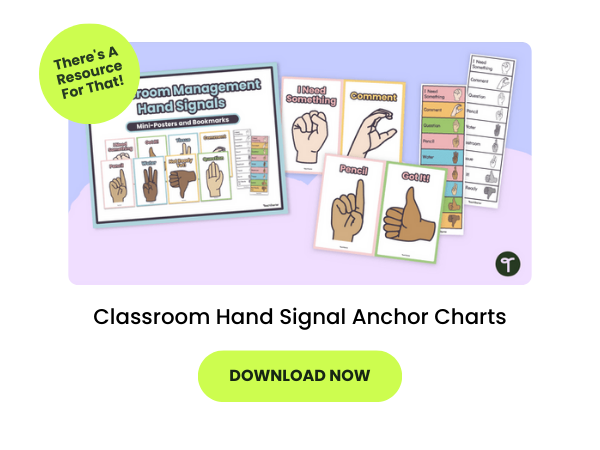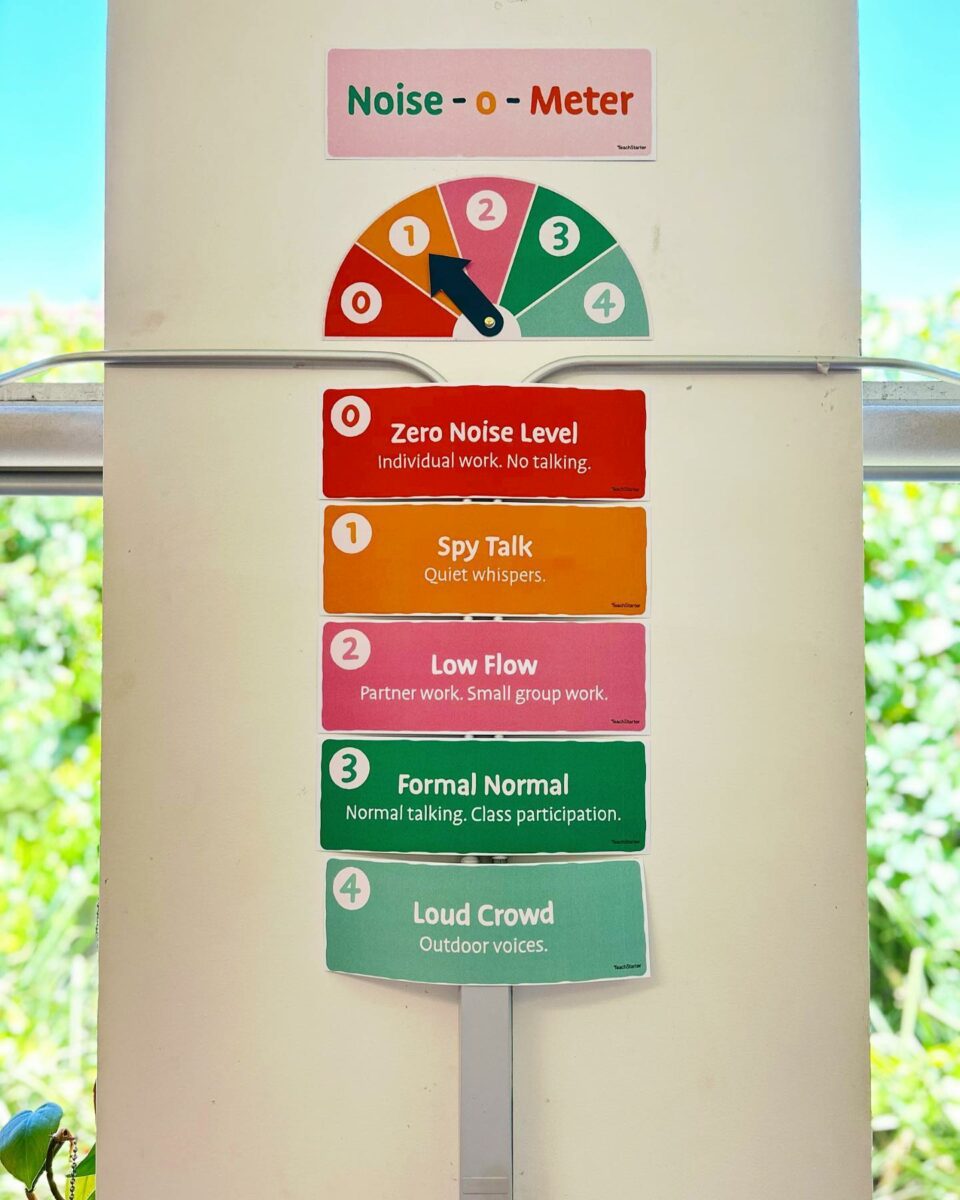Hands up if you’ve lost your voice as a teacher? After a fun day, an excursion, assemly or even just a regular day in class? You’re not alone! Researchers have found that 20 percent of teachers miss days at work because of vocal problems, and we’re more likely to experience a range of symptoms than our peers in other careers.
Despite this, many of us haven’t learned much about our voice, let alone how important voice care is for teachers.
Maybe you’ve never really thought about your voice-making anatomy. As babies, most of us can learn how to make sounds without explicit teaching, so understanding how the human voice works is often left to singers and medical professionals.
However, as teachers, it’s important for us to understand a few key things about our voice so that we can take care of this crucial tool in our teaching and communicating toolkit. Here are a few tips from the teachers of the Teach Starter team that can help you save your voice so you can use it on the weekends too.
What You Need to Know About Your Voice
- Your voice is created by the vibration of your vocal folds (a.k.a. vocal cords).
- These are two bands of smooth muscle tissue that are attached to muscles in your larynx (a.k.a. voice box), which is located at the base of your tongue.
- Your vocal folds, your tongue and the surrounding muscles in your neck and face are like any other muscles in your body and need to be warmed up before use to avoid causing damage or pain — especially if you’re going to spend a whole day teaching.
10 Ways to Take Care of Your Voice
With that in mind, here’s what you need to know about voice care for teachers this school year!
1. Stay Hydrated
Keep a bottle of water at your desk, and sip it at regular intervals.
We know how much teachers love their coffee – us included! — but we’re going to go ahead and share the bad news straight away … it’s best to limit your caffeine intake. Caffeine dehydrates the body. Unfortunately, caffeine can make your larynx and vocal folds dry, too.
2. Plan Rest Breaks for Your Voice
This is something you need to do every day! Not just when your voice is tired or hoarse.
When planning your lessons for the day, consider which activities require significant vocal effort and which don’t. Try to alternate them, if possible, to rest your voice throughout the day. Give some group work activities a try for a nice break from having to project!
3. Avoid Vocal Extremes
That means to limit both shouting and whispering! While it’s no surprise that shouting isn’t so great for our voice, it turns out that both of these vocal extremes can cause stress to your vocal cords.
There’s actually a difference between whispering and speaking quietly. It’s best explained by identifying that a whisper contains more breath. This extra breath puts pressure on your vocal folds in a more acute way than when you are just speaking in your normal voice at a low volume.
4. Use a Personal Amplification Device
As awareness of the impact of vocal strain builds amongst the teaching community, personal amplification products designed specifically for teachers are becoming more common in classrooms. You may have already seen portable voice amplifiers appear on social media, especially during the pandemic.
This kind of device is a fantastic way to ensure you aren’t going to strain your voice day after day!
5. Learn How to Project Your Voice
While you can definitely use a microphone in your classroom, as someone who speaks to groups daily, learning how to safely project your voice is crucial.
Projecting your voice is very different from shouting. While the volume of sound we make when shouting often comes from a closed and strained throat, the volume we can create when projecting our voice comes from an open throat, thus reducing the stress placed on our vocal folds.
The simplest way to begin learning how to project your voice is to imagine your voice coming out of your mouth and traveling across to the other side of the room. This little mind trick helps us to practise ‘forward resonance,’ which is the fancy term for increasing the volume of our voice by making it resonate in the hollow parts of our faces.
Speaking ‘from the centre of your face’ helps reduce the strain on your throat and vocal cords while maximising how far your voice can be carried across a space.

6. Use Conscious Breath
Learning how to support your voice with your breath is so important! Singers learn to ‘sing from their belly’ in order to create sound in the most physically ‘safe’ way. By supporting their voice with breath, the effort it takes to create the vocal sounds and volume singers need comes from the muscles in their abdomen rather than the more delicate muscles in their throat.
Of course, you can go and take singing lessons if you’d like to — they will help you become a great custodian of your breath and your voice! However, if you’d prefer to take a slightly more introverted approach, practising mindful breathing, meditation or yoga is a great way to learn how to utilise the power of your breath.
This rainbow breathing video walks not just you but your students through a calming breathing exercise!
7. Avoid Throat Clearing
Throat clearing is essentially banging your vocal cords together with great force. The physical impact of throat clearing is similar to having a bad cough.
Rather than forcing a loud or ‘sharp’ throat clearing, try instead to sip water and swallow hard. If you must clear your throat, attempt to do so gently.
8. Use Non-Vocal Attention Grabbers
Find ways to limit speaking over the noise in loud places by using non-vocal attention getters. Some ideas include:
- Clapping rhythms
- Hand signals
- Playing music
- Using a whistle or a bell
9. Consider Your Whole Health
As much as we’d sometimes prefer not to acknowledge, our overall health has an impact on every aspect of our physical and mental well-being. Our body’s ability to make a voice is no different.
- Fatigue, in particular, can have a significant impact on our voice.
- Eating a balanced diet helps to keep the mucous membranes in our throats healthy.
- Regular exercise increases stamina and muscle tone, improving our posture and, in turn, improving our voice use.
10. Teach Your Students to Control the Noise
Teaching students how to control their voice levels is an important part of classroom management and teaches our students when different volumes are appropriate. It can also help protect your teacher voice as you don’t have to shout over noisy students.
Establish what it means to speak in low conversation voices vs. projecting, and establish a system of 0 or no voices.
Year 6 and 7 teacher Harry uses a Teach Starter noise meter in his classroom to help with this.
As he said when he first hung the display, ‘Having this Teach Starter visual (in a relatively high spot that all kids will be able to see) will remind me (and the students) to be able to use the language and associated number just before releasing students into the independent part of a lesson, or whatever it might be that we’re up to, and have it become routine. I hope, after a while, for students to be able to identify what the noise level should be dependent upon the activity or lesson and perhaps even have some of the (taller) students be in charge of changing the arrow.’
11. Take. Your. Sick. Days.
When you’re sick with a hoarse or husky voice, don’t push yourself. Call in a relief teacher. Like a runner who has strained a muscle, you can’t return to the track and pretend that a ‘gentle’ run isn’t going to do further damage and lengthen your recovery time.
While it’s true that taking a day off can mean more work than just turning up, it’s so important to listen to your body and give your voice time to heal before heading back into the vocally demanding realm of the classroom teacher!










Great tips! I especially like the voice amplifier idea. Sometimes I suddenly lose my voice while speaking to the class and get a very scratchy throat and I know then I must have strained my cord too much!
We're glad you found this helpful, Zoha! Thanks for taking the time to give us your feedback!
Hello, I am a new teacher and by the end of my first week, my voice was distinctly faded! I have now got a Redcat and am using hands signs more, also I am putting in 'voice breaks' during the day - such as in silent reading. Thanks for a good article, bringing it up as a topic that needs discussing.
Hi Rebecca. Thank you for your comment. I'm happy to hear that you have been able to put some strategies in place to help save your voice. It's so important and a great idea to get into these good habits early in your teaching career.